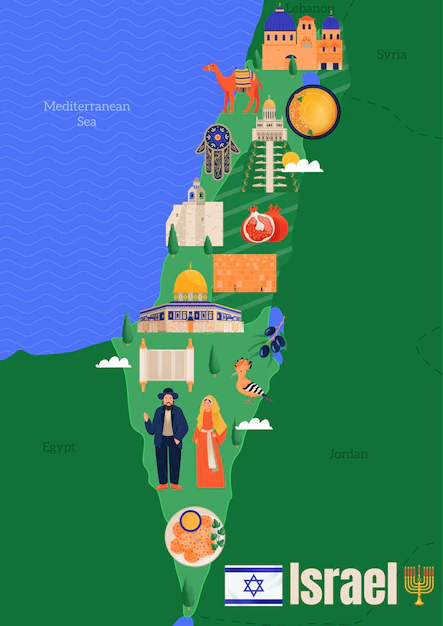Exploring The 4 Physiographic Regions of Israel
Introduction
Israel, a country steeped in historical and cultural significance, boasts diverse landscapes and distinct physiographic regions that contribute to its natural beauty and ecological richness. Comprising four primary regions, each with its unique characteristics, Israel’s varied topography encompasses a range of terrains, from coastal plains to mountainous highlands and arid deserts.

These four physiographic regions collectively contribute to Israel’s geographical diversity, offering a mosaic of landscapes, climates, and ecosystems within a relatively small area yet a first-rate fabulous nation.
Exploring The 4 Physiographic Regions of Israel
- Coastal Plain (The Mediterranean Coastal Plain): Stretching along Israel’s western edge, the Coastal Plain borders the Mediterranean Sea. Characterized by fertile soil and mild climate, this region supports extensive agricultural activity, including citrus orchards, vineyards, and farmland. Major cities like Tel Aviv and Haifa are situated on this plain, serving as vibrant cultural and economic centers.
- The Mountainous Region (The Central Highlands): Central Israel is dominated by the Central Highlands, which consist of mountain ranges, hills, and plateaus. Jerusalem, one of the world’s oldest and most historically significant cities, is situated within these highlands. This region holds profound religious and cultural importance, housing ancient sites and religious landmarks for Judaism, Christianity, and Islam. The Central Highlands provide breathtaking vistas and serve as a pivotal part of Israel’s historical and spiritual heritage.
- The Jordan Rift Valley: The Jordan Rift Valley runs along Israel’s eastern border and forms part of the larger Great Rift Valley system. This geological trench comprises a series of valleys, basins, and bodies of water, including the Sea of Galilee (Lake Kinneret), the Jordan River, and the Dead Sea. The area is known for its geological formations and unique landscapes. The Dead Sea, the lowest point on Earth, is renowned for its high salt concentration, offering therapeutic and recreational opportunities.
- The Negev Desert: Covering a substantial portion of southern Israel, the Negev Desert is a vast arid region characterized by its rugged terrain, rocky plateaus, and desert landscapes. Despite its harsh climate, the Negev showcases diverse ecosystems, including wadis (dry riverbeds), canyons, and unique flora and fauna adapted to desert conditions. This region is also home to the ancient city of Beersheba and various Bedouin communities, preserving cultural traditions amid the arid expanse.
Conclusion
These four physiographic regions collectively contribute to Israel’s geographical diversity, offering a mosaic of landscapes, climates, and ecosystems within a relatively small area. From fertile coastal plains and historic highlands to the geological wonders of rift valleys and the stark beauty of desert expanses, Israel’s diverse regions showcase the country’s natural beauty and provide a backdrop for its rich history, culture, and ecological heritage.







